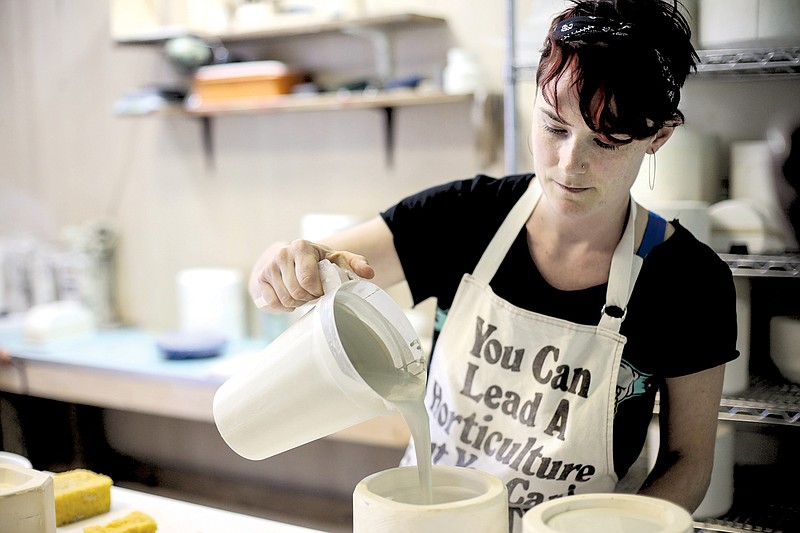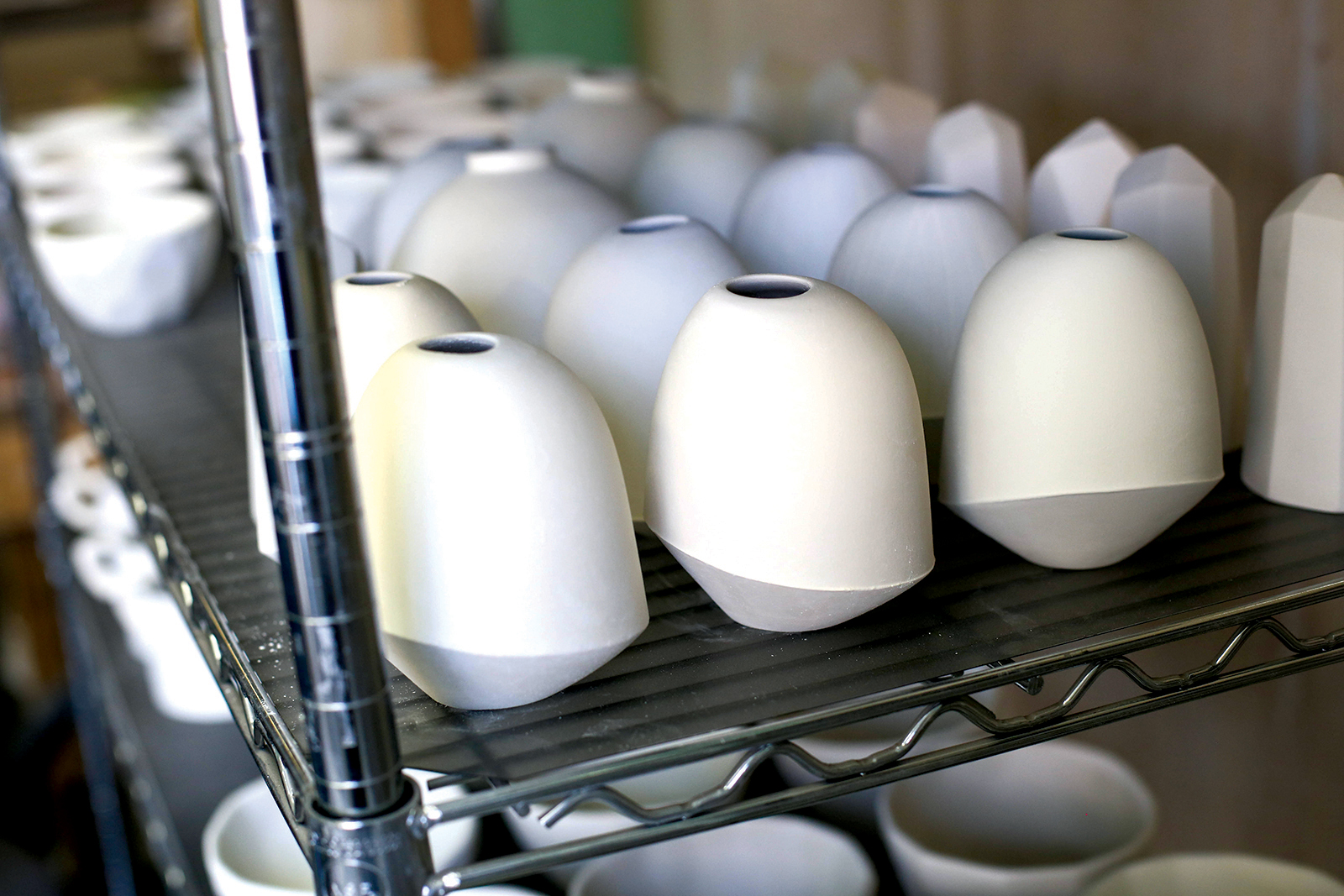TO LEARN MORE
Visit Bean and Bailey Ceramics online or schedule a studio tour at beanandbailey.bigcartel.com
In a small room in a Highland Park studio, Jessie Bean Bailey works with a consistent flow, pouring a thick mixture into molds. In another room, Anderson Bailey shaves a mold out of its cast, his hands steady. Their small, scruffy dog, Mr. Parker, trots between them. Hip-hop music hangs in the air. And some porcelain dust.
The husband and wife are working in tandem making what Anderson calls "useful ceramic vessels." On the shelves, smooth bowls, cups and vases in delicate geometric shapes stand at attention in neat masses, sturdy but refined.
This handiwork - and Jessie and Anderson's complementary relationship - makes up Bean and Bailey Ceramics, an endeavor that has grown from a grant-funded dream to a mainstay of Chattanooga's maker community.
"Usually I'll start the pieces and you finish the pieces, right?" Jessie said, turning to Anderson. "I make 'em, you glaze 'em."
"That's a bang bang," Anderson replied smiling back at her. It's serious work they don't take too seriously. They giggle a lot together.
Their process is methodical. Jessie and Anderson say it becomes meditative - a liquid clay, known as the slip, is poured into a mold. Excess slip is poured from the mold once the walls begin to harden. The rough edges of these pieces are sanded smooth then fired twice in a kiln.
Some pieces are glazed. Others are left as raw porcelain. But each design has flowing, organic lines that seem ornate and minimalistic all at once.
The slip-casting model seemed scalable and had room for profit and growth. Two people could make the exact same piece. In the future, more people could get involved and see the same results. And slip-casting is less physically demanding than making pieces on a wheel, a process that wears on backs and wrists over time.
Jessie and Anderson became friends at the Appalachian Center for Craft. Every night they would talk on the couch behind the clay studio. They became partners in their glass-blowing class and got more comfortable with each other, as close friends and creatives.
Then the timing aligned. They were both single. There was a friend's party. There was tequila.
"We just realized we both really liked each other more than friends," Jessie said.
After the couple relocated to Chattanooga, they applied for a grant from MakeWork, a program that has since ended, and in December of 2012 their business began.
"Our first year we did a few craft fairs and I think we somehow randomly got one wholesale order and that was it," Anderson said. "Then it like just slowly started growing."
Most of their orders are now wholesale. Bigger, more commercial companies have taken notice of the duo. Anthropologie recently ordered a second shipment of Bean and Bailey merchandise.
"I think it works because we have worked together in the past and have always been good friends," Anderson said. "We appreciated each other since before we ever started dating."
The two say they still don't make much money, but it's workable for a married couple splitting bills. And the hard work is paying off. They expanded their studio space. They haven't had to take assisting jobs with other artists since November. Their first Anthropologie check came in.
They feel successful. And happy.
"I'm in here every day just playing with goop," Anderson said.

